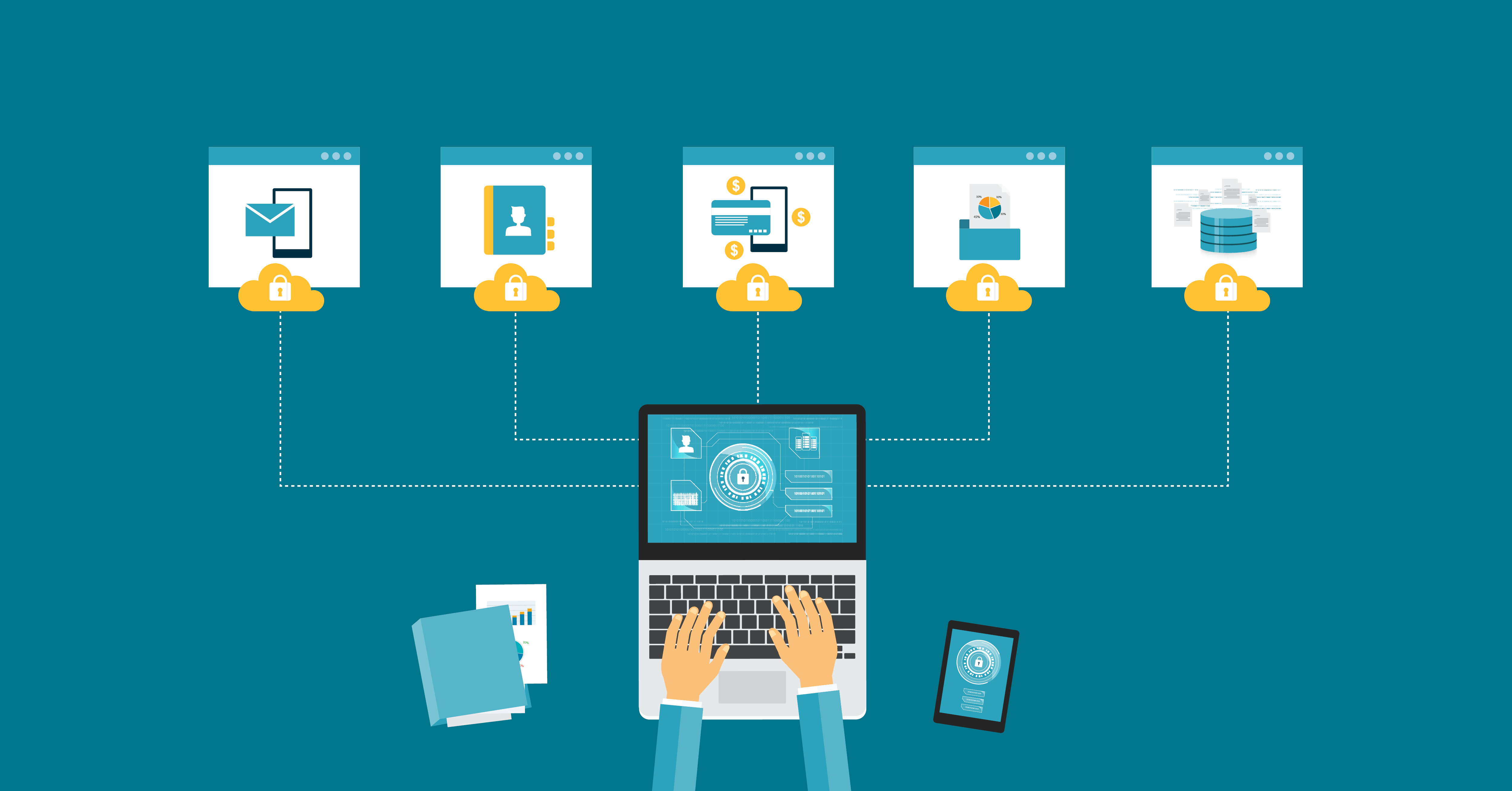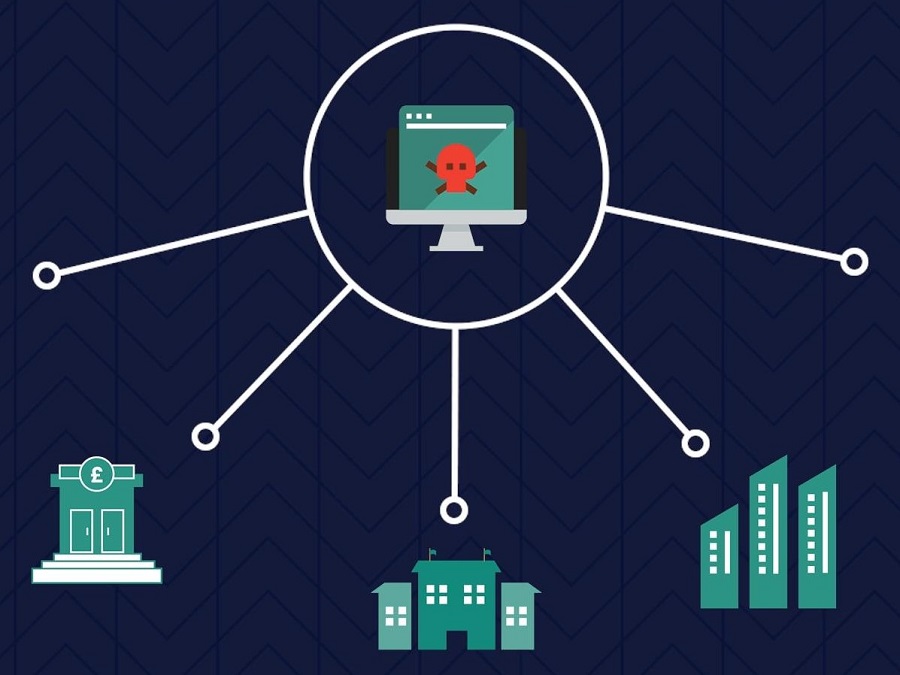
Insider Tips for Maintaining PDPA Compliance in the Digital Age (2024 Edition)
June 19, 2024






Brief overview of PDPA and its importance for businesses in Singapore
The Personal Data Protection Act (PDPA) of Singapore, enacted in 2012, represents a significant milestone in the nation's commitment to protecting personal data. The PDPA establishes a comprehensive data protection regime to ensure that personal data is responsibly managed and safeguarded by organizations. This law is crucial for businesses operating in Singapore as it not only mandates compliance but also builds consumer trust, which is invaluable in today's data-driven economy.
The PDPA applies to all private sector organizations, including small and medium-sized enterprises (SMEs), multinational corporations, and even non-profit organizations. It sets out various obligations, such as obtaining consent before collecting personal data, limiting the use and disclosure of such data, and ensuring its security. These provisions aim to balance the need for businesses to use personal data for legitimate purposes with the right of individuals to have their personal data protected.
One of the key aspects of the PDPA is its emphasis on transparency and accountability. Organizations must clearly inform individuals about the purposes for which their personal data is being collected, used, or disclosed. They must also implement reasonable security measures to protect personal data from unauthorized access or breaches. Failure to comply with these requirements can result in hefty fines and damage to an organization's reputation.
Thesis statement: Utilizing the right tools can simplify PDPA compliance and protect your business
Navigating the labyrinth of PDPA compliance can be daunting, especially for businesses already juggling numerous operational challenges. However, with the right tools and technologies, achieving and maintaining PDPA compliance becomes significantly more manageable. These tools not only help in adhering to legal requirements but also enhance the overall security posture of an organization, safeguarding it against potential data breaches and regulatory penalties.
In this comprehensive guide, we will delve into various categories of tools that can aid businesses in their PDPA compliance journey. From data discovery and classification to consent management, access control, data encryption, and breach response, we will explore how these tools can streamline compliance processes and fortify data protection efforts. By leveraging these technologies, businesses can ensure they are well-equipped to meet PDPA obligations, protect personal data, and maintain the trust of their customers.
In the sections that follow, we will provide an in-depth look at each category of tools, highlighting their features, benefits, and how they contribute to PDPA compliance. Whether you are a small business owner or a compliance officer at a large corporation, this guide will offer valuable insights and practical recommendations to help you navigate the complexities of PDPA compliance effectively.
So, let's dive in and explore the top tools that can aid your business in achieving and maintaining PDPA compliance, ensuring that personal data is handled with the utmost care and security.
Importance of identifying and classifying personal data
Identifying and classifying personal data is the bedrock of any robust data protection strategy. In the context of PDPA compliance, understanding what personal data your organization holds, where it resides, and how sensitive it is, forms the foundation of all subsequent protective measures. Without a clear picture of the data landscape, efforts to secure it are akin to shooting in the dark.
Data discovery tools help organizations automatically identify and catalog personal data across various storage locations, be it on-premises servers, cloud environments, or end-user devices. This process involves scanning databases, files, and applications to detect and index personal information. Once identified, data classification tools come into play, categorizing data based on its sensitivity and regulatory requirements. For instance, customer contact details may be classified differently from financial information or medical records.
Effective data classification allows organizations to apply appropriate security controls and handling procedures. Sensitive data can be encrypted, access can be restricted, and detailed monitoring can be implemented to detect any unauthorized activities. Moreover, classification helps in creating retention policies, ensuring that personal data is not kept longer than necessary, which is a crucial aspect of PDPA compliance.
Examples of Data Discovery and Classification Tools
IBM Security Guardium Data Protection
IBM Security Guardium Data Protection is a powerful tool designed to discover, classify, and protect sensitive data across various environments. It offers real-time monitoring, automated compliance reporting, and advanced analytics to help businesses manage their data protection efforts effectively. Guardium can scan databases, big data platforms, and file systems to identify personal data, and classify it based on predefined or custom criteria.
With its robust set of features, IBM Guardium provides comprehensive visibility into data usage and access patterns. It can generate alerts for suspicious activities, helping organizations respond swiftly to potential threats. Additionally, its automated compliance reporting capabilities streamline the process of demonstrating PDPA compliance to regulators.
Microsoft 365 Compliance Manager
Microsoft 365 Compliance Manager is an integrated solution that helps organizations assess and manage their compliance risks. It provides a centralized dashboard to monitor compliance activities and offers actionable insights to improve data protection practices. Compliance Manager supports various regulations, including PDPA, and provides templates and controls specific to these requirements.
This tool enables organizations to perform continuous risk assessments, identify compliance gaps, and implement recommended actions. Its data discovery capabilities help in identifying personal data within Microsoft 365 environments, while its classification features ensure that data is handled according to its sensitivity. By leveraging Microsoft 365 Compliance Manager, businesses can streamline their compliance efforts and enhance their data protection strategies.
Symantec Data Loss Prevention (DLP)
Symantec Data Loss Prevention (DLP) is a comprehensive solution that helps organizations discover, monitor, and protect sensitive data. It provides robust data discovery and classification capabilities, allowing businesses to identify personal data across endpoints, networks, and storage systems. Symantec DLP offers predefined policies and customizable rules to classify data based on regulatory requirements and business needs.
With its powerful monitoring and enforcement features, Symantec DLP ensures that sensitive data is not exposed to unauthorized access or transmission. It can block or quarantine data transfers that violate policies, providing an additional layer of protection. By using Symantec DLP, organizations can gain visibility into their data landscape, enforce security policies, and ensure compliance with PDPA.
How these tools help businesses comply with PDPA
Utilizing data discovery and classification tools like IBM Security Guardium, Microsoft 365 Compliance Manager, and Symantec DLP offers numerous benefits for PDPA compliance:
By leveraging these tools, businesses can establish a strong foundation for PDPA compliance, ensuring that personal data is protected and managed in accordance with regulatory requirements. This not only helps in avoiding fines and penalties but also builds trust with customers, enhancing the overall reputation of the organization.

The role of consent in PDPA compliance
Consent is a fundamental principle of PDPA compliance, reflecting the importance of individual autonomy over personal data. Under the PDPA, businesses must obtain explicit consent from individuals before collecting, using, or disclosing their personal data. This requirement ensures that individuals are fully informed about how their data will be handled and have control over its use.
Managing consent effectively is not just about legal compliance; it also builds trust and transparency with customers. When individuals know that their data is being handled with their permission, they are more likely to engage positively with the business. Conversely, mishandling consent can lead to reputational damage and legal repercussions.
Consent management platforms play a crucial role in automating and streamlining the process of obtaining, storing, and managing consent. These platforms provide tools for creating consent forms, tracking user preferences, and maintaining detailed records of consent. By leveraging these platforms, businesses can ensure that they comply with PDPA requirements and respect the privacy choices of their customers.
Examples of Consent Management Platforms
OneTrust
OneTrust is a leading consent management platform that offers a comprehensive suite of tools for managing privacy and compliance. It provides features for creating customizable consent forms, tracking user preferences, and generating detailed reports. OneTrust's platform supports various consent types, including cookie consent, data processing consent, and marketing consent.
With OneTrust, businesses can automate the process of obtaining and managing consent, ensuring that personal data is handled according to individuals' preferences. The platform also offers robust auditing and reporting capabilities, making it easier to demonstrate compliance with PDPA and other data protection regulations.
TrustArc
TrustArc provides a flexible and scalable solution for managing consent and privacy compliance. Its platform allows businesses to create and deploy consent banners, manage user preferences, and maintain comprehensive records of consent. TrustArc supports various regulatory frameworks, including PDPA, and offers tools for managing cross-border data transfers and third-party vendor compliance.
TrustArc's platform integrates seamlessly with existing IT infrastructure, enabling businesses to manage consent across multiple channels and touchpoints. By leveraging TrustArc, organizations can ensure that they comply with PDPA requirements, provide transparency to users, and build trust through responsible data handling practices.
Cookiebot
Cookiebot is a specialized consent management solution focused on managing website cookies and tracking technologies. It automatically scans websites to detect cookies, categorizes them, and generates a consent banner for users. Cookiebot's platform ensures that businesses obtain explicit consent from users before storing or accessing cookies on their devices.
With Cookiebot, businesses can provide clear information about the types of cookies used, their purposes, and the data they collect. Users can easily manage their cookie preferences, ensuring that their privacy choices are respected. By using Cookiebot, organizations can comply with PDPA requirements related to cookie consent and provide a transparent and user-friendly experience.
Benefits of using consent management platforms for PDPA compliance
Implementing consent management platforms like OneTrust, TrustArc, and Cookiebot offers several benefits for PDPA compliance:
By leveraging consent management platforms, businesses can ensure that they comply with PDPA requirements, respect user preferences, and build trust through transparent and responsible data handling practices. These platforms provide the tools needed to manage consent effectively, reducing the risk of non-compliance and enhancing the overall privacy posture of the organization.

Significance of access control in protecting personal data
Access control is a cornerstone of data security and PDPA compliance. It ensures that personal data is accessed only by authorized individuals and for legitimate purposes. By implementing robust access control measures, businesses can prevent unauthorized access, data breaches, and other security incidents that could compromise personal data.
Effective access control involves a combination of policies, procedures, and technologies. It starts with defining who has access to what data and under what conditions. This involves creating user roles and permissions based on job functions and responsibilities. Access control also includes mechanisms for authenticating users, such as passwords, biometrics, and multi-factor authentication (MFA).
Authentication is a critical aspect of access control, as it verifies the identity of users before granting access to sensitive data. Strong authentication measures, such as MFA, add an extra layer of security by requiring users to provide multiple forms of verification. This significantly reduces the risk of unauthorized access, even if one authentication factor is compromised.
Examples of Access Control and Authentication Tools
Okta
Okta is a leading identity and access management (IAM) solution that provides secure and seamless access to applications and data. It offers a range of features, including single sign-on (SSO), multi-factor authentication (MFA), and user lifecycle management. Okta's platform integrates with various applications and systems, enabling businesses to manage user access centrally.
With Okta, businesses can enforce strong authentication policies, ensuring that only authorized users can access sensitive data. Its SSO feature simplifies the login process for users, reducing password fatigue and improving security. Okta's comprehensive access control capabilities help organizations protect personal data and comply with PDPA requirements.
Auth0
Auth0 is a flexible authentication and authorization platform that supports a wide range of authentication methods, including SSO, MFA, and passwordless login. It provides robust security features, such as anomaly detection and brute force protection, to safeguard user accounts and personal data. Auth0's platform is highly customizable, allowing businesses to tailor authentication workflows to their specific needs.
Auth0's MFA capabilities add an extra layer of security by requiring users to verify their identity using multiple factors. This significantly reduces the risk of unauthorized access and helps businesses comply with PDPA by protecting personal data. Auth0 also offers detailed logging and reporting features, enabling organizations to monitor access activities and detect potential security threats.
OneLogin
OneLogin provides a unified access management solution that includes SSO, MFA, and directory integration. It offers advanced security features, such as adaptive authentication and risk-based access controls, to protect personal data from unauthorized access. OneLogin's platform integrates with various applications and systems, enabling businesses to manage user access efficiently.
OneLogin's adaptive authentication feature dynamically adjusts security requirements based on the user's behavior and risk profile. This ensures that high-risk activities are subject to additional verification, enhancing overall security. OneLogin's comprehensive access control capabilities help businesses protect personal data and comply with PDPA by enforcing strong authentication measures.
How these tools contribute to PDPA compliance
Access control and authentication tools like Okta, Auth0, and OneLogin play a crucial role in PDPA compliance by:
By implementing access control and authentication tools, businesses can protect personal data from unauthorized access, ensure compliance with PDPA regulations, and enhance their overall security posture. These tools provide the necessary mechanisms to manage user access effectively, safeguarding sensitive information and building trust with customers.

The importance of data encryption in PDPA compliance
Data encryption is a critical component of data protection, ensuring that personal data remains secure both in transit and at rest. Encryption converts data into a coded format that can only be accessed by authorized individuals with the decryption key. This makes it significantly harder for unauthorized parties to access and misuse sensitive information.
Under the PDPA, businesses are required to implement reasonable security measures to protect personal data. Encryption is one of the most effective ways to achieve this, as it provides a robust barrier against unauthorized access and data breaches. Even if encrypted data is intercepted or stolen, it remains unintelligible without the decryption key.
Data encryption also helps businesses comply with specific PDPA provisions related to data security and protection. It ensures that personal data is handled in a manner that safeguards its confidentiality, integrity, and availability. By implementing strong encryption practices, organizations can demonstrate their commitment to protecting personal data and meeting regulatory requirements.
Examples of Data Encryption Solutions
BitLocker
BitLocker is a full-disk encryption feature available in Microsoft Windows, providing robust protection for data stored on devices. It uses Advanced Encryption Standard (AES) encryption to secure data, ensuring that it remains protected even if a device is lost or stolen. BitLocker is easy to deploy and manage, making it an excellent choice for businesses looking to enhance their data security.
BitLocker integrates seamlessly with Windows operating systems, providing a user-friendly interface for managing encryption settings. It also supports hardware-based encryption, offering additional security for devices with Trusted Platform Module (TPM) chips. By using BitLocker, businesses can ensure that personal data stored on endpoints is protected against unauthorized access and breaches.
VeraCrypt
VeraCrypt is an open-source encryption software that provides disk encryption for Windows, macOS, and Linux. It offers strong encryption algorithms, including AES, Serpent, and Twofish, ensuring that data remains secure. VeraCrypt allows users to create encrypted volumes and containers, providing flexibility in how data is protected.
VeraCrypt's advanced features include hidden volumes and plausible deniability, adding extra layers of security for sensitive data. Its open-source nature means that it is continuously reviewed and improved by the security community, ensuring that it remains a reliable and robust encryption solution. By leveraging VeraCrypt, businesses can protect personal data across various platforms and comply with PDPA requirements.
AxCrypt
AxCrypt is a user-friendly encryption solution designed for individuals and small businesses. It offers AES-256 encryption, ensuring that data is protected from unauthorized access. AxCrypt integrates seamlessly with Windows, providing a simple interface for encrypting and decrypting files and folders.
AxCrypt also offers features such as secure file sharing, password management, and cloud storage integration. This makes it a versatile tool for protecting personal data in various scenarios. By using AxCrypt, businesses can ensure that sensitive information is encrypted and secure, meeting PDPA requirements for data protection.
Implementing data encryption solutions for PDPA compliance
Implementing data encryption solutions like BitLocker, VeraCrypt, and AxCrypt helps businesses comply with PDPA by:
By leveraging data encryption solutions, businesses can protect personal data from unauthorized access and breaches, ensuring compliance with PDPA regulations. These solutions provide robust security measures that safeguard sensitive information, enhance data protection practices, and build trust with customers.

The role of data breach response in PDPA compliance
A swift and effective response to data breaches is critical for PDPA compliance. The PDPA mandates that organizations notify the Personal Data Protection Commission (PDPC) and affected individuals promptly in the event of a data breach that results in significant harm. This requirement underscores the importance of having a robust data breach response plan and tools in place.
Data breach response tools help organizations detect, analyze, and respond to security incidents, minimizing the impact of breaches and ensuring that regulatory requirements are met. These tools provide the capabilities needed to identify the source of the breach, assess the extent of the damage, and implement corrective actions. They also facilitate communication with regulatory authorities and affected individuals, ensuring that notifications are timely and accurate.
Effective data breach response not only helps in complying with PDPA requirements but also mitigates the reputational damage and financial losses associated with data breaches. By leveraging advanced breach response tools, businesses can enhance their incident response capabilities, protect personal data, and maintain trust with customers.
Examples of Data Breach Response Tools
LogRhythm NextGen SIEM Platform
LogRhythm NextGen SIEM Platform is a comprehensive security information and event management (SIEM) solution that helps organizations detect and respond to security incidents. It provides advanced threat detection, real-time monitoring, and automated response capabilities. LogRhythm's platform integrates with various data sources, offering a holistic view of the security landscape.
LogRhythm's NextGen SIEM Platform uses machine learning and analytics to identify anomalies and potential threats. Its automated response features enable organizations to mitigate incidents swiftly, reducing the impact of data breaches. By leveraging LogRhythm, businesses can enhance their breach detection and response capabilities, ensuring compliance with PDPA requirements.
IBM Resilient
IBM Resilient is an incident response platform designed to help organizations manage and respond to data breaches effectively. It provides a comprehensive suite of tools for incident management, including case management, workflow automation, and threat intelligence integration. IBM Resilient's platform enables organizations to streamline their response processes and improve coordination among teams.
IBM Resilient's platform offers pre-built playbooks and templates for various types of incidents, ensuring that responses are consistent and efficient. Its integration with other security tools enhances situational awareness and enables a more comprehensive response. By using IBM Resilient, businesses can ensure that they are prepared to handle data breaches effectively and comply with PDPA requirements.
EnCase Endpoint Investigator
EnCase Endpoint Investigator is a powerful forensic tool designed for investigating data breaches and other security incidents. It provides advanced capabilities for data collection, analysis, and reporting. EnCase's platform supports various operating systems and devices, enabling organizations to investigate incidents across their entire environment.
EnCase Endpoint Investigator offers features such as disk imaging, file recovery, and timeline analysis, helping organizations uncover the root cause of incidents and assess the extent of the damage. Its detailed reporting capabilities facilitate communication with regulatory authorities and affected individuals. By leveraging EnCase, businesses can enhance their incident investigation capabilities and ensure compliance with PDPA requirements.
Utilizing data breach response tools to meet PDPA requirements
Implementing data breach response tools like LogRhythm, IBM Resilient, and EnCase helps businesses comply with PDPA by:
By leveraging data breach response tools, businesses can enhance their incident response capabilities, ensure compliance with PDPA requirements, and protect personal data from unauthorized access and breaches. These tools provide the necessary mechanisms to manage security incidents effectively, minimizing the impact of breaches and maintaining trust with customers.
Recap of the top tools for PDPA compliance
Navigating the complexities of PDPA compliance requires a comprehensive approach and the right set of tools. In this guide, we have explored various categories of tools that can aid businesses in their compliance journey:
The importance of a comprehensive approach to PDPA compliance
Achieving and maintaining PDPA compliance requires more than just implementing individual tools. It necessitates a comprehensive approach that integrates these tools into a cohesive data protection strategy. This approach should encompass policies, procedures, and technologies that work together to safeguard personal data and ensure compliance with regulatory requirements.
Organizations must conduct regular risk assessments, identify compliance gaps, and implement corrective actions. They should also provide training and awareness programs for employees, ensuring that everyone understands their roles and responsibilities in protecting personal data. By fostering a culture of data protection and leveraging the right tools, businesses can enhance their compliance efforts and build trust with customers.
Encouragement for businesses to adopt these tools to protect personal data and maintain compliance
In the digital age, protecting personal data is not just a regulatory requirement but a business imperative. Customers expect organizations to handle their data responsibly and transparently. By adopting the tools and practices outlined in this guide, businesses can ensure that they comply with PDPA, protect personal data, and maintain the trust of their customers.
Implementing these tools may require an investment of time and resources, but the benefits far outweigh the costs. Enhanced data protection, reduced risk of breaches, and improved regulatory compliance contribute to a stronger security posture and a positive reputation. By taking proactive steps to protect personal data, businesses can demonstrate their commitment to privacy and build lasting relationships with their customers.